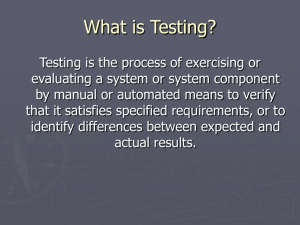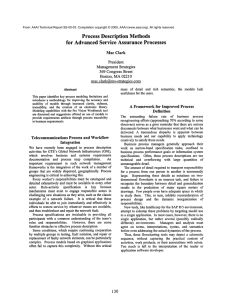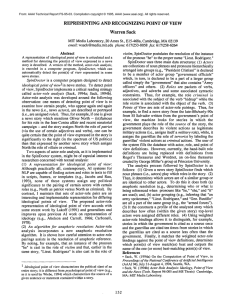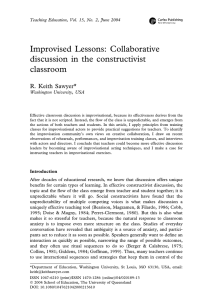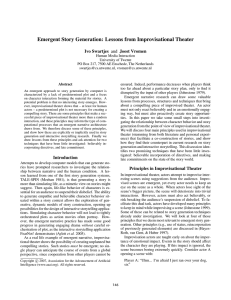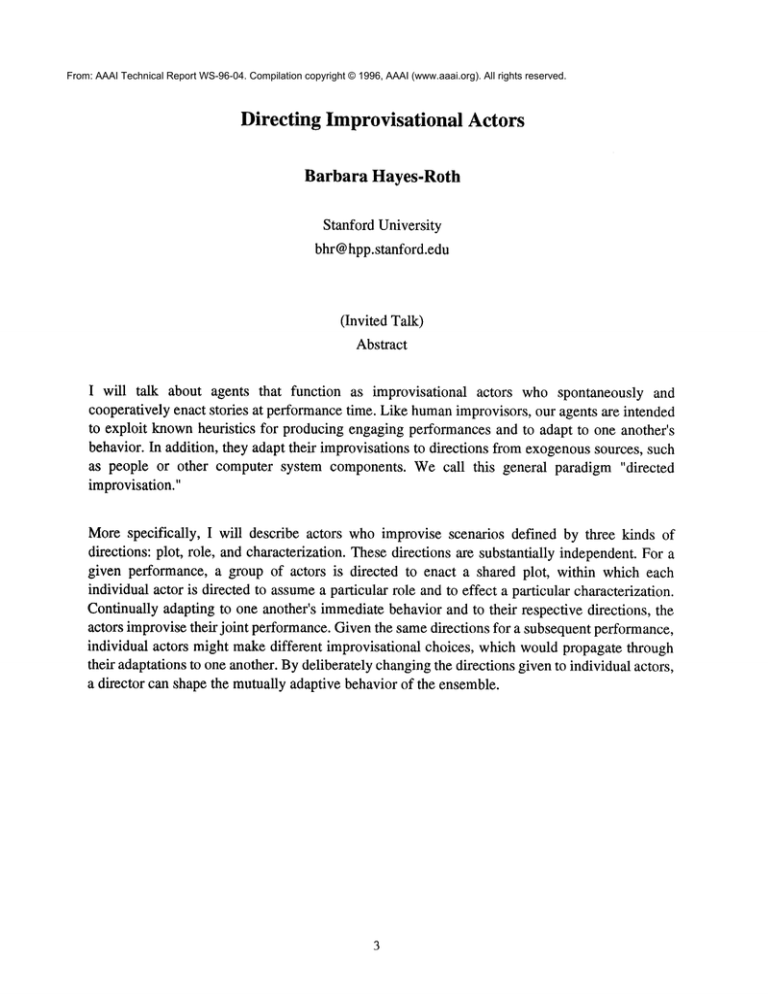
From: AAAI Technical Report WS-96-04. Compilation copyright © 1996, AAAI (www.aaai.org). All rights reserved.
Directing Improvisational Actors
Barbara Hayes-Roth
Stanford University
bhr@hpp.stanford.edu
(Invited Talk)
Abstract
I will talk about agents that function as improvisational actors who spontaneously and
cooperatively enact stories at performancetime. Like humanimprovisors, our agents are intended
to exploit knownheuristics for producing engaging performances and to adapt to one another’s
behavior. In addition, they adapt their improvisations to directions from exogenoussources, such
as people or other computer system components. Wecall this general paradigm "directed
improvisation."
Morespecifically, I will describe actors whoimprovise scenarios defined by three kinds of
directions: plot, role, and characterization. Thesedirections are substantially independent.For a
given performance, a group of actors is directed to enact a shared plot, within which each
individual actor is directed to assumea particular role and to effect a particular characterization.
Continually adapting to one another’s immediatebehavior and to their respective directions, the
actors improvise their joint performance.Giventhe samedirections for a subsequent performance,
individual actors might makedifferent improvisational choices, which wouldpropagate through
their adaptations to one another. Bydeliberately changingthe directions given to individual actors,
a director can shape the mutually adaptive behavior of the ensemble.



